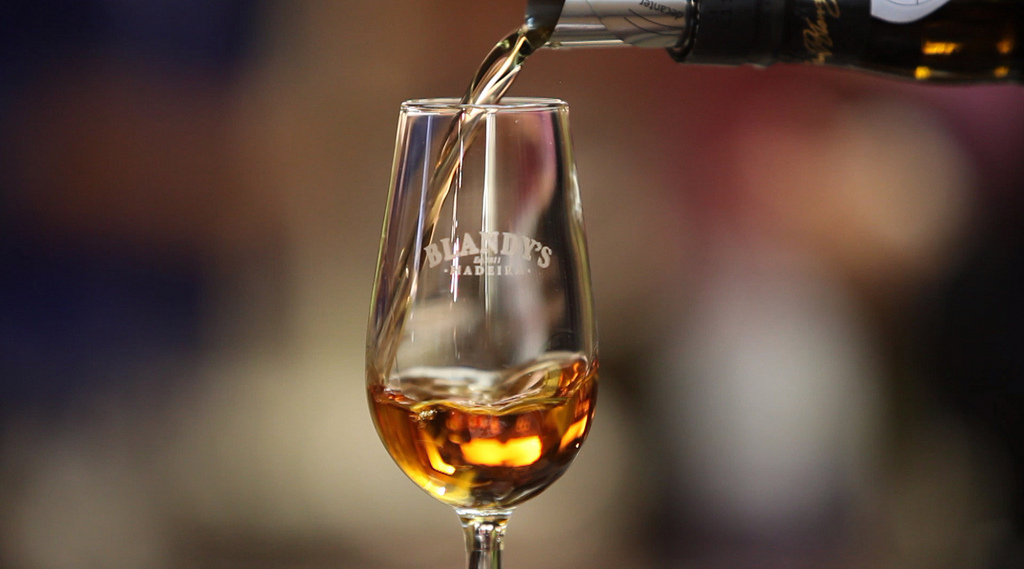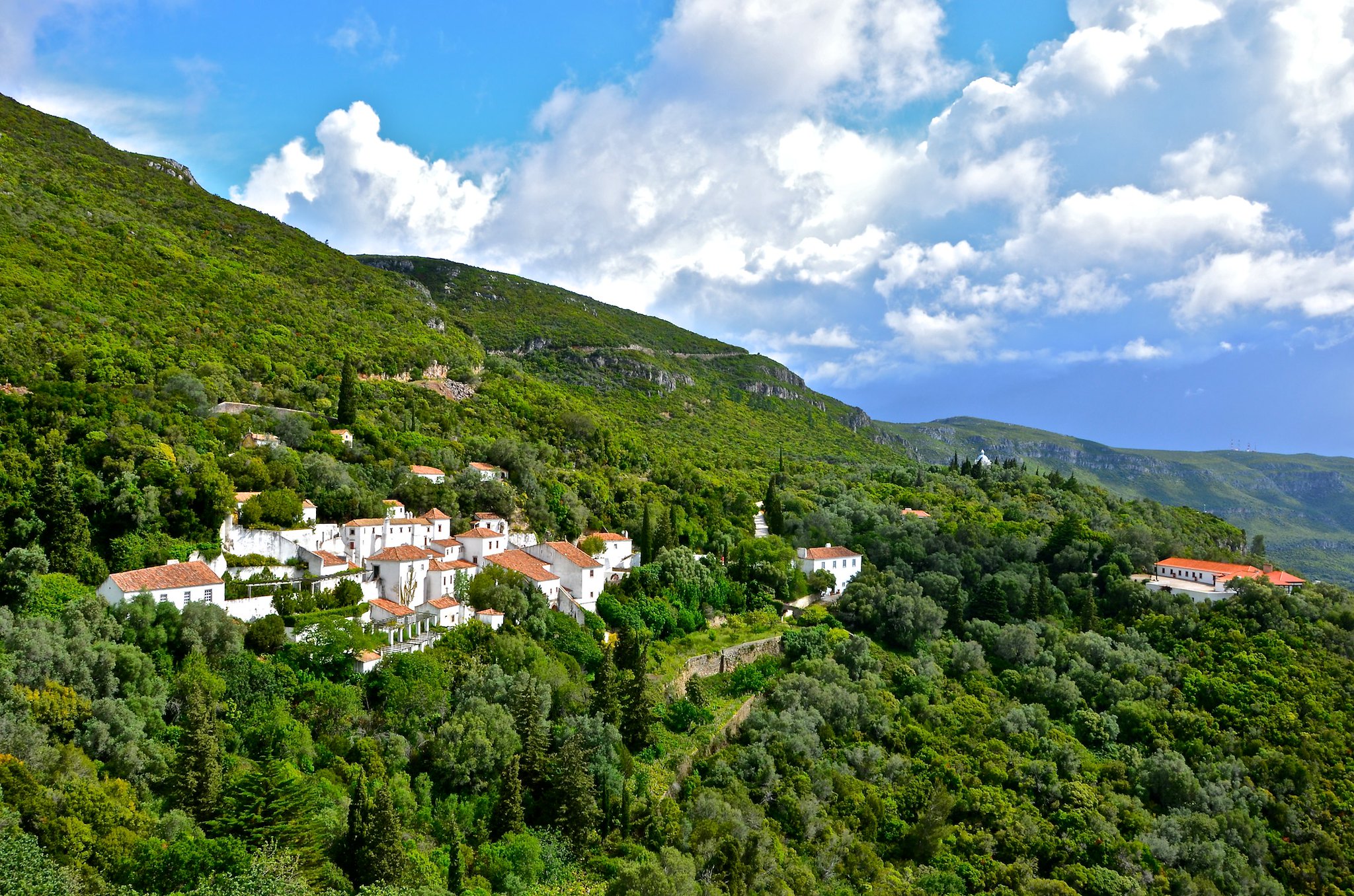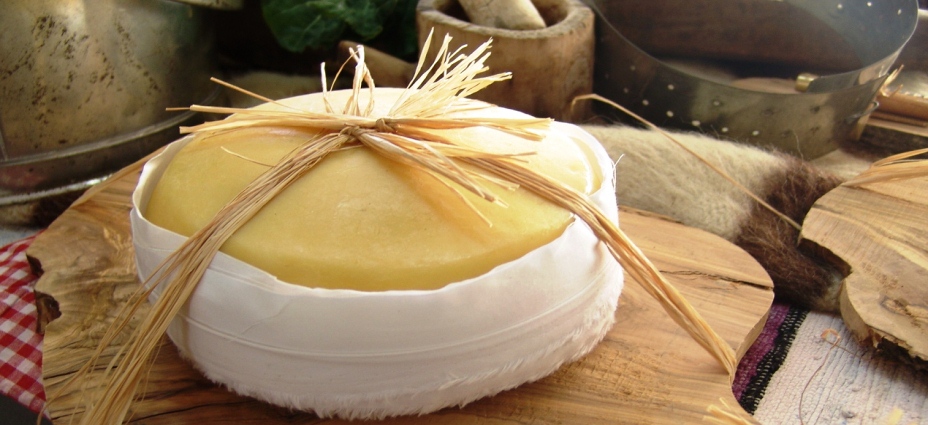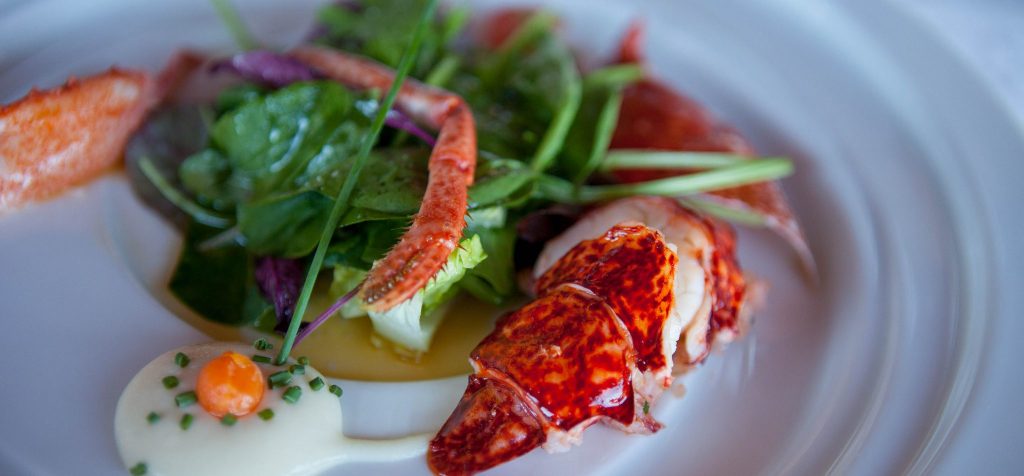A Beginner’s Guide to Madeira Wine

Did you know that Madeira was poured during Thomas Jefferson’s toast at the signing of the Declaration of Independence in 1776, or that it was savored at the inauguration of George Washington shortly thereafter? At one time, Madeira was so ubiquitous that it perfumed ladies’ handkerchieves; was given to military personnel for service of their country; and was frequently recommended for sick and overworked people – nicknamed the “milk of the old”. Such a fundamental part of our vinous history, and yet today, we would assume 99.99% of Americans know nothing about Madeira. And of those that do, Madeira is solely a difficult-to-procure ingredient for an obscure French sauce first documented by Escoffier and championed by Julia Child.
To be fair, Madeira is neither easy to find, nor easy to understand. After a week long visit to Madeira, exploring its sweet and sultry flavors, we still can’t give you a solid elevator speech on what it is! So please don’t feel frustrated, or put off, if you can’t sort it at first glance. It’s not easy, but it’s absolutely worth the try!
What is Madeira Wine?
Put simply, Madeira is a fortified wine, aged under heat, and produced in the demarcated region of Madeira from approximately 5 distinct grapes. It’s sold as either Dry, Medium Dry, Medium Sweet or Sweet, all of which are marked by their high levels of acidity.
This marked acidity is a direct result of its location: an archipelago, just off the northwestern coast of Morocco, composed of two inhabited islands – Madeira and Porto Santo – as well as two uninhabited islands, the Desertas and Selvagens. Of these four islands, only Madeira and Porto Santo grows grapes. On 500 hectares of volcanic soil, located primarily on the north coast, vines teeter precariously on death-defying slopes that have been made into terraces called “poios”. These are harvested solely by hand. To irrigate, water was historically captured from the highest parts of the island (around 1800m) and channeled through 2150 km of man-made canals called “levadas” – many of which date back to the 16th century! If you’re looking for ingenuity at its finest, this is it!
As for the grapes, your main protagonist is Tinta Negra Mole, which is a crossing of Grenache and Pinot Noir. But you’ll also stumble across four “noble” grapes including: Sercial, Verdelho, Boal (also known as Bual) and Malvasia (aka Malmsey). On rare occasion, Terrantez and Bastardo grapes might pop in to say hello, but their meager plantings make them unicorns hidden on the fringes. You might also find the Yeti of Madeira grapes (a lottery win if you find them): Carão de Moça, Caracol, Complexa, Deliciosa, Listrão, Malvasia Babosa, Malvasia Roxa (black grape), Moscatel de Málaga, Rio Grande, Triunfo, Valveirinho and Verdelho Tinto. But don’t worry about those for now.
If you’re now panicking that your next wine shopping adventure will result in sweaty palms and stunted prose when you can’t remember said Madeiran grape, don’t worry, because the process of making Madeira wine tends to strip much of the varietal characteristics when it’s finally bottled and sold. So getting too hung up on the grape characteristics won’t help that much. What’s important to know is which grapes are used to create each style of wine.
Styles of Madeira Wine
This is by far the easiest and hardest part to explain about Madeira wine. Madeira is often made as a monovarietal, which due to legislation, determines the wine’s sweetness level. Below we’ve listed the sugar levels associated with each grape. But how we define “sweetness” is not only by the grape and its sugars, there are levels of nuance and balance that must be factored in.
There are four levels of sweetness marked on every Madeiran wine label: Dry (Seco), Medium Dry (Meio Seco), Medium Sweet (Meio Doce) and Sweet (Doce). (measurements are in grams of sugar per liter)
- Sercial – Dry (Seco) ≤ 59,3 gr/L
- Verdelho – Medium Dry (Meio Seco) 54,2 – 78,1 gr/L
- Boal – Medium Sweet (Meio Doce) 78,1 – 100,04 gr/L
- Malvasia – Sweet (Doce) ≤ 100,04 gr/L
- Tinta Negra Mole, makes wines at every level of sweetness
Easy, right?! Now you simply head to your local shop and pick out a Madeira wine based on your preferred level of sweetness, right? Nope! Here’s the rub, “Dry” is not always the “Dry” you think it might be. The minimum sugar level is approximately 20 grams/liter, making every single one of these wines technically sweet.
That said…
Within the study of “taste”, there is something called balance. When you have a liquid or food that is very sweet and cloying, we try to balance it with enough acidity to make it palatable and fresh. Honey and lemon in hot water is the easiest way to experience this. The hot water with only honey gives you a sweet drink yet when you add the lemon its acidity quickly acts to balance the flavor to make it less cloying and more harmonious. This contradiction of something sweet appearing less so can also be experienced in another way. When we smell peach aromas in a wine, we often think it’s sweet even if there’s zero sugar within. Our mind associates peaches with sweet, so then after smelling the fruit, our mind tricks us into tasting what we believe to be a sweet drink. The mind is a very powerful and manipulative place, which is why we need to be cautious of our assumptions.
Having tasted over 100+ Madeira wines, our perception of Dry, Medium Dry, Medium Sweet and Sweet often didn’t match what was on the bottle. More than once, we found Seco (Dry) to be rich and sweet, while Meio Doce (Medium Rich) seemed dry and austere. How could this possibly happen? Enter “acidity” stage left!
Strangely, a subtropical island is not the ideal place to ripen grapes. We thought the opposite! Consequently, come harvest, the grapes retain varying levels of acidity – some of which could remove nail polish! Sounds sketchy, but this is exactly what’s needed to help balance the sugar. The more acidity, the drier you’ll perceive the wine.
Unfortunately, there’s no way for you to know how you’ll perceive a particular Madeira wine without being familiar with the specific house and style, but lucky for you there’s only a handful of Madeira Houses, making the learning curve somewhat reasonable. (see below)
To give you an idea of how much sugar is in each wine, check out the following chart. Rule of thumb is that 60 grams of sugar is equivalent to around 16 sugar cubes:
| Madeira wines | Baumé Scale (ºBé) | Sugars(g/l) |
| Extra dry | < 0,5 | ? 49,1 |
| Dry | < 1,5 | ? 59,3 |
| Medium dry | 1,0 ? ºBé < 2,5 | 54,2 ? Sugars(g/l) ? 78,1 |
| Medium sweet | 2,5 ? ºBé ? 3,5 | 78,1 ? Sugars(g/l) ? 100,04 |
| Sweet | > 3,5 | ? 100,04 |
*The Baumé scale is a measure of a solution’s specific gravity, not its concentration.
Sweetness, grapes and acidity aside, will you like these wines? The answer: YES! Think rich, earthy flavors of dried fruits, honey, coffee, molasses and spices (curry, cinnamon, nutmeg, etc). Then toss in fresh peach and red fruit every now and again, and you have an ever evolving wine, layered with complex flavors. These wines are special, other-worldly and unpredictable. Most importantly, they’re addictive! Like Sherry, once you dive in, it’s impossible to curb your curiosity and desire for more.
Making Madeira Wine
An über interesting part of the story: Madeira is unique not only due to its wonderful sweetness and textured palate, but also for its ability to endure. The majority of wines in the world (in fact, all we know of except Madeira) will oxidize when left open, leaving you with a flavorless, insipid liquid better fit for your spaghetti bolognese. And that’s the cool part – Madeira doesn’t change, alter or shift when left open…at all! Don’t believe us? We tasted a Madeira wine that had been opened for…30 years! You read that right…30 years in a bottle and on a shelf! It was fresh, alive and full of character – something I would gladly purchase on the spot!
The formula for Madeira is a simple triad: oxygen, time and heat. Now you might be thinking, “Wait a minute, those are your run-of-the-mill nemeses to any wine!” And you’d be right…generally. Amontillado Sherry and Tawny Port are oxidized, allowing the wines to mature and show rich caramel notes; hence, oxygen has its exceptions. We can also name thousands of wines that are meant to age and evolve over time, displaying more complex characteristics. But never, ever, are we told to heat our wine, unless…it’s Madeira!
To make Madeira wine, the pressed juice is fermented then quickly fortified with alcohol from grape origin alcohol. The timing of fortification is relative to the grape. The must from the Malvasia grape is fortified at the beginning of fermentation, while Boal and Verdelho get spiked on the fourth day and Sercial about a month after the fermentation started. The timing allows the resulting wine to be sweet or dry, depending on when the fermentation of the grape’s sugar was stopped, but all the wines will have high alcohol content.
The fortified young wine is then heated in one of two methods: estufagem or canteiro. An estufa is a large container – usually stainless steel – lined with pipes. The pipes circulate hot water around the container until the wine reaches a max of 50 degrees Celsius or 120 degrees Fahrenheit. It’s then kept at this temperature for approximately 3 months before bottling. These wines may never be bottled or sold prior to the 31st October of the second year following the harvesting. As the heating process is rather quick in the estufagem method, the resulting wine tends to show burnt caramel flavors.
In the Canteiro method, young fortified wines are transferred into wooden casks and placed onto a rooftop attic where they’re exposed to the heat of the sun as it beats down on the tile roofs. As the time needed to heat the wine is considerably more lengthy (we’re talking 20 to 100 years of storing!), the end result is less of a caramel profile and more fresh fruit aromas and flavors.
The process of heat, oxygen and time leaves you with a wine that is so beautifully abused that absolutely nothing can destroy it. Think of it as toughening up the wine.
Cheat sheet for Madeira Wine
- Reserve (five years) – This is the minimum amount of aging a wine labeled with one of the noble varieties is permitted to have.
- Special Reserve (10 years) – Wines are often aged naturally without any artificial heat source.
- Extra Reserve (over 15 years) – A style that’s rare to produce, with many producers extending the aging to 20 years for a vintage or producing a colheita. It is richer in style than a Special Reserve Madeira.
- Colheita or Harvest – This style includes wines from a single vintage, but aged for a shorter period than true Frasqueira Madeira. The wine can be labeled with a vintage date, but includes the word Colheita on it. – This style must be aged at least 20 years.
- Finest has been aged for at least three years. This style is usually reserved for cooking.
- Rainwater a style of Madeira that’s mild and tends to be made with Tinta Negra Mole.
Madeira Houses
Depending on who you talk to, there are anywhere from 5 to 8 producers of Madeira wine, which is accurate depending on how you define a producer. Do you include the producer who’s still building their stocks and has no product on the market? They’re making Madeira, but are waiting for it to age enough to be sold as Madeira wine. What about the producer who bottles finished wines? Is he a producer or a marketer?
For the sake of ease and convenience, we’ve provided you with a list of Madeira Wine Houses to seek out at your leisure, but expect a more indepth article in the near future summarizing the style of each House.
- HM Borges (warning: funky chillout music kicks off on site)
- Henriques & Henriques
- J. Faria & Filhos
- Justinos
- Madeira Vitners
- Madeira Wine Company
- Pereira d’Oliveira
- Barbeito
Where to find Madeira?
This is the challenging part, but less so every day as IVBAM (Madeira Wine, Embroidery and Handicraft Institute) is working diligently to try and get Madeira available internationally! To date, around 80% of Madeira wine is exported off the island – sort of a no brainer if you consider the population is equivalent to Anchorage, Alaska. From this, 81% is sold in Europe, mainly to France (for that famous sauce!), Portugal, England and Germany. Outside Europe, Japan and America are the largest consumers.
The great part about Madeira is that storage is not an issue. Hence if you find it, anywhere, it’s most likely in good condition. That said, tasting Madeira on the island itself ups the game to a whole new level, because Madeira island is one of the most beautiful places you’ll ever visit. Paired with a skewer of freshly grilled meat while overlooking the volcanic islands terraced landscape is surreal, if not life altering. Trust us, we know, because we almost set up camp on Madeira permanently – it’s that beautiful! If you’re keen to experience this for yourself, drop us a line and let us customize a guided trip for you!
Cheers,
Ryan and Gabriella Opaz






